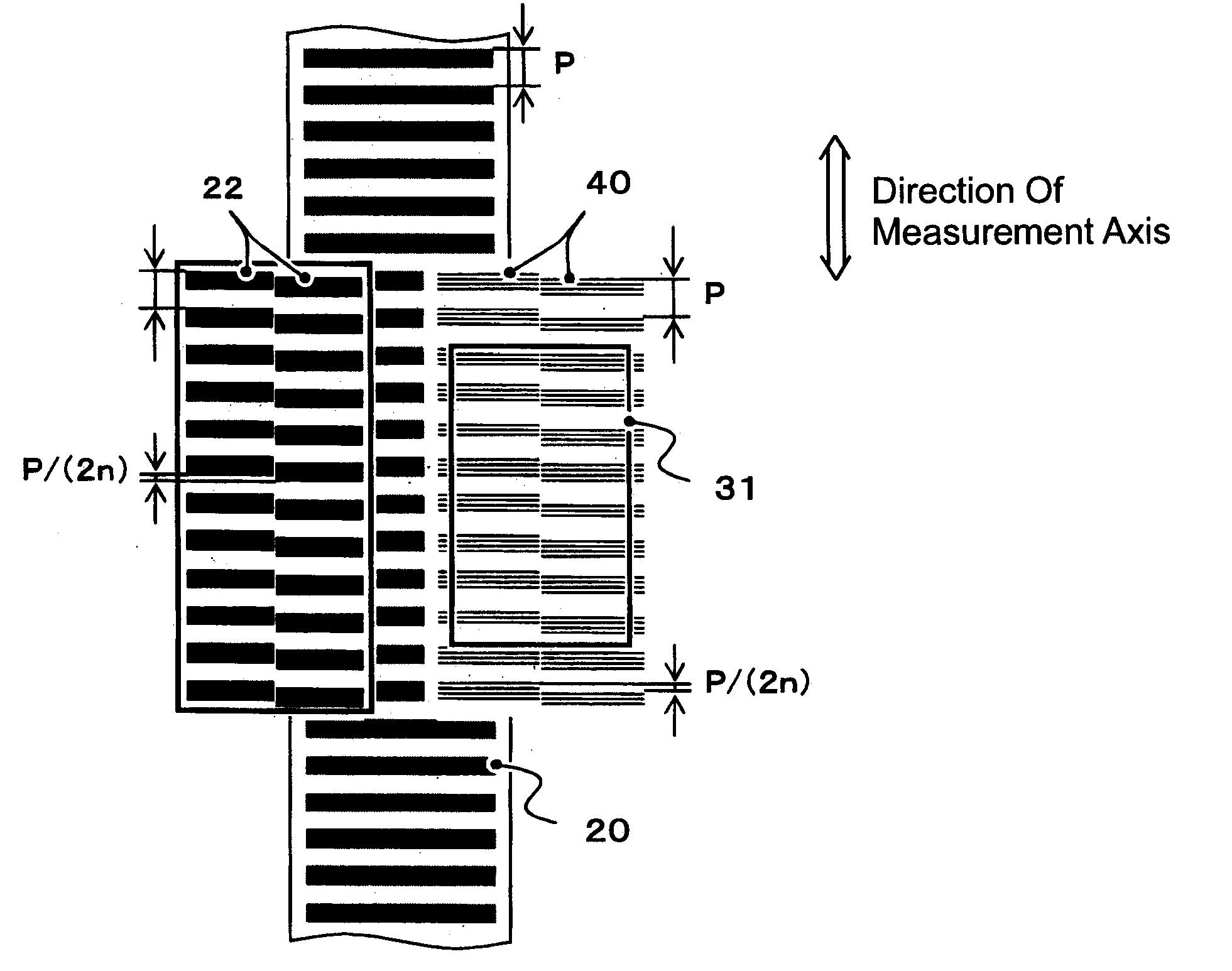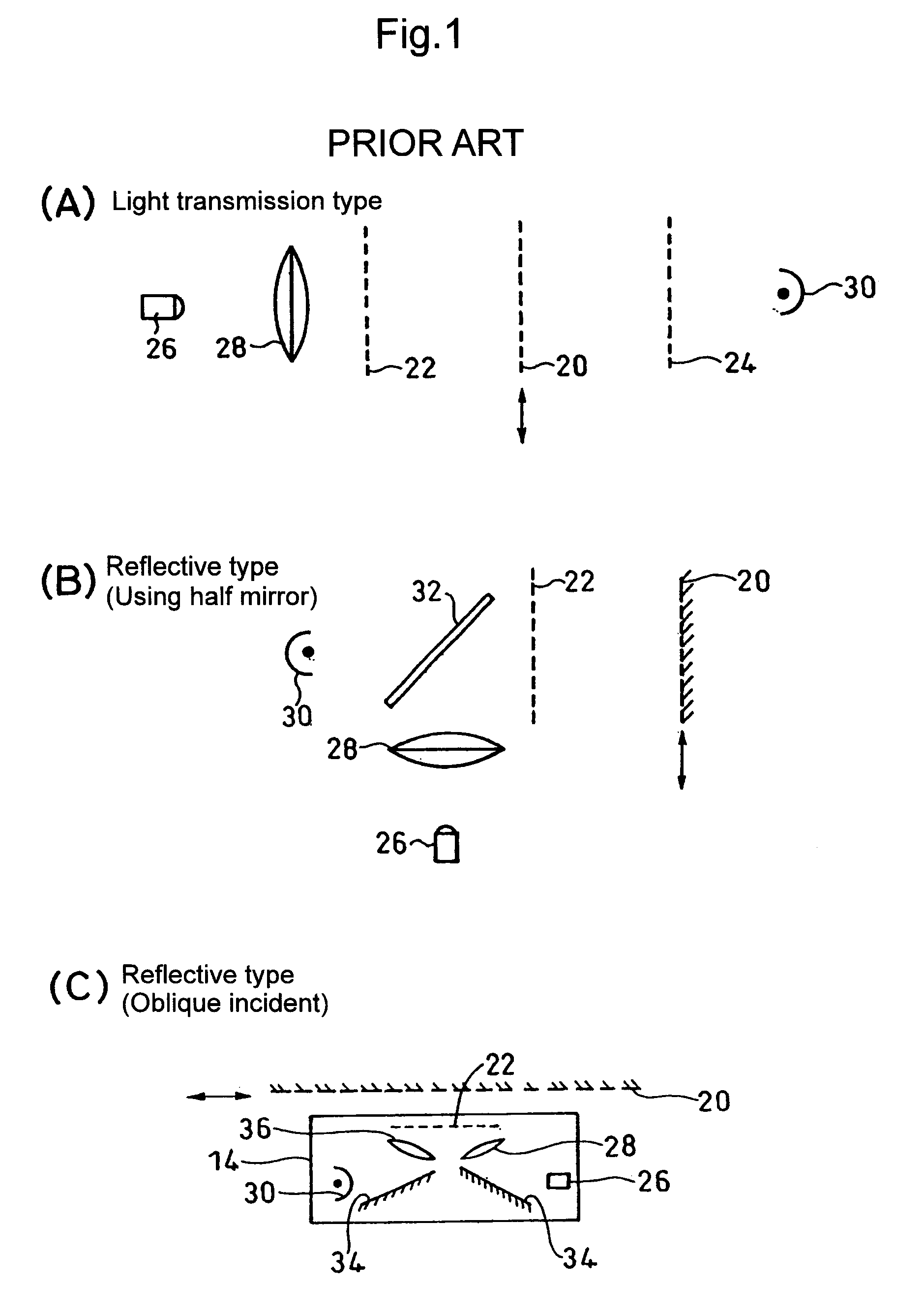Photoelectric encoder
a technology of photoelectric encoder and encoder, which is applied in the direction of optical conversion of sensor output, instruments, measurement devices, etc., can solve the problems of increasing manufacturing costs, affecting the quality of the signal, and the harmonic of the 3rd order being larger than the harmonic of the 2nd order,
- Summary
- Abstract
- Description
- Claims
- Application Information
AI Technical Summary
Benefits of technology
Problems solved by technology
Method used
Image
Examples
Embodiment Construction
[0034] Exemplary embodiments of the present invention will be hereinafter described in detail with reference to the drawings.
[0035] In a first exemplary embodiment of the present invention applied to the reflection type encoder, as shown in FIG. 4, the pattern of a first grating 22 formed on a glass substrate with low manufacturing costs, on which a light receiving array 31 is to be mounted, is divided in two in a direction perpendicular to a measurement axis. Then, one of the patterns is shifted in the direction of the measurement axis with respect to the other. When n represents the order of a harmonic component to be removed, the corresponding shift amount is represented by a grating pitch P / (2×n). When a harmonic component of the 3rd order is removed, a shift amount is P / 6.
[0036] In the first exemplary embodiment, light emitted from a light source transmits through the first grating 22, reflected by the second grating 20 and generates interference fringes 40 on a light receivi...
PUM
 Login to View More
Login to View More Abstract
Description
Claims
Application Information
 Login to View More
Login to View More - R&D
- Intellectual Property
- Life Sciences
- Materials
- Tech Scout
- Unparalleled Data Quality
- Higher Quality Content
- 60% Fewer Hallucinations
Browse by: Latest US Patents, China's latest patents, Technical Efficacy Thesaurus, Application Domain, Technology Topic, Popular Technical Reports.
© 2025 PatSnap. All rights reserved.Legal|Privacy policy|Modern Slavery Act Transparency Statement|Sitemap|About US| Contact US: help@patsnap.com



